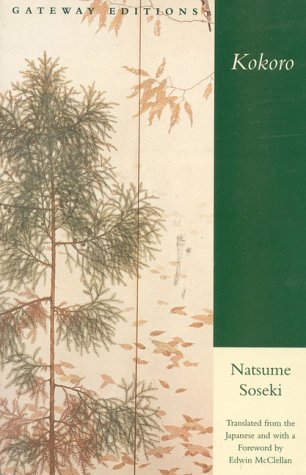
Kokoro Summary of Natsume Sōseki's Book

Kokoro by Natsume Sōseki: A Deep Dive into Loneliness and Japanese Literature
Natsume Sōseki's Kokoro, first published on August 11, 1914, is a classic work of Japanese literature that delves deeply into the theme of loneliness. The title itself, which translates to "the heart of things," sets the tone for a profound exploration of human emotions and relationships. This thought-provoking trilogy of stories is a poignant reflection on the complexities of the human heart and serves as a compelling introduction to modern Japanese literature.
Characters
The characters in Kokoro are richly drawn and imbued with complexity, making them relatable and memorable for readers. The novel primarily revolves around three main characters:
Sensei: A mysterious and enigmatic figure, Sensei is a retired academic who lives a quiet and isolated life. His past is shrouded in secrecy, and he harbors deep regrets and sorrow that weigh heavily on his soul.
The Narrator: A young university student who befriends Sensei and becomes intrigued by his enigmatic personality. The narrator serves as the reader's window into Sensei's world, providing insight into the older man's thoughts and emotions.
K:A young man from Sensei's past whose tragic fate becomes intertwined with Sensei's life. K's story sheds light on the complexities of human relationships and the consequences of our actions.
Detailed Summary
Kokoro is divided into three distinct parts, each offering a unique perspective on the theme of loneliness and human connection.
In the first part, the narrator forms a close bond with Sensei, gradually unraveling the older man's troubled past and innermost thoughts. As Sensei confides in the narrator, the reader is drawn into a world of regret, guilt, and profound sadness.
The second part of the novel shifts focus to K, a young man from Sensei's past whose tragic story serves as a cautionary tale about the consequences of isolation and unspoken emotions. K's narrative sheds light on the complexities of human relationships and the ways in which our past can shape our present.
The final part of Kokoro brings the three main characters together in a powerful climax that explores the depths of human emotion and the intricacies of forgiveness and redemption. As Sensei's secrets are laid bare and his past comes back to haunt him, the reader is left with a haunting and thought-provoking conclusion.
Analysis
Kokoro is a masterful work that delves deep into the complexities of the human heart, exploring themes of loneliness, regret, and the search for connection. Sōseki's prose is elegant and introspective, drawing the reader into a world of profound emotion and introspection.
The novel's exploration of Japanese society and culture adds depth and richness to the narrative, offering a glimpse into the traditions and values that shape the characters' lives. Through the intertwined stories of Sensei, the narrator, and K, Sōseki paints a portrait of a society grappling with the consequences of isolation and unspoken emotions.
At its core, Kokoro is a meditation on the nature of human relationships and the ways in which our past experiences shape our present selves. Sōseki's keen insight into the human psyche and his poignant exploration of loneliness make Kokoro a timeless and relevant work of literature.
Final thoughts
To conclude, Kokoro by Natsume Sōseki is a powerful and thought-provoking novel that will resonate with readers of all backgrounds. Its exploration of loneliness, regret, and human connection is as relevant today as it was when it was first published in 1914. If you enjoy introspective and emotionally resonant literature, I highly recommend picking up a copy of Kokoro or listening to the audiobook for an immersive literary experience.
9780895267153 (ISBN10: 0809260956)






Related Books